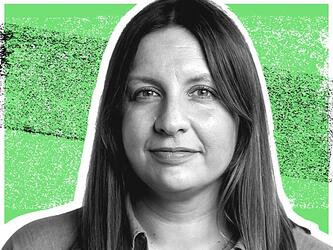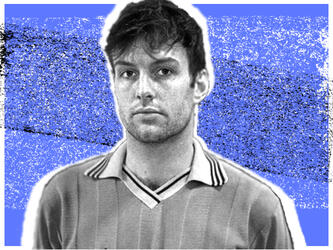I have seen the future of market research, and it works
Researchers, who thrive on battles between methodologies, have naturally argued for a future of quant surveys, human qual and everything in-between. But it doesn’t matter which side of the debate you come down on – new technology or old research methods; because we’ve all missed the point.
Our future is not a choice between technology and traditional research methodologies. What really matters is how we use technology to cook up the raw ingredients into digestible insights. I think that the debate about the future of research needs to be about how best to synthesise information from different sources.
Actually, I don’t even need to hypothesise because the future of insights already exists; Mark Kershisnik, senior director of global market research for Eli Lilly has created it at the company’s CLUE centre in Indiana.
To the untrained eye, the CLUE centre appears to be an extremely high-end qualitative interviewing facility. But the real beauty is how the information collected at CLUE is seamlessly integrated with all of the rest of Lilly’s information assets.
The company’s FocusVision Librarian account stores the interviews, which are streamed and recorded into it. Here, videos along with other qualitative research work from around the world, are transcribed and indexed. Staff can access this research, along with every other insight Lilly owns in its business intelligence repository. This includes data from quantitative research, patent databases, social media, news feeds and internal business information systems.
Information is literally at employees’ fingertips. CSI-style wall-sized screens dominate huge synthesis rooms; the screens are touch sensitive and connected to Lilly’s repository of information. Much like Tom Cruise in Minority Report, users simply touch the screen to access a menu, allowing the user to bring up different information from different sources.
Video clips, tweets, sales figures and more can be dragged up on the screen and annotated to create a living multimedia storyboard. And the screens are useful across the globe too. Teams from all over the world can work on the same analysis from remote locations because the screens support real-time collaboration; meaning that as many minds as possible meet to synthesise information into insights. And this creates a beautifully full circle; as the storyboard can be saved for presentations and future reference, adding the knowledge into Lilly’s repository of information.
According to Kershisnik, the investment in integrating Lilly’s collective data sources and supporting collaborative synthesis with state of the art technology is paying off through reductions in time and eliminating duplication for the company. Lilly is able to identify millions of dollars in savings as well as successful initiatives impacted by having the right information at the right time to power decision-making and produce a rapid ROI on these investments. It is not a surprise that other major corporations have requested tours of Lilly’s CLUE centre.
The future of market research undoubtedly involves big data. There will probably be robots, some algorithms involved and maybe a couple of drones. But it is not an either/or proposition; the future will be an inclusive one, and will ultimately still succeed or fail on the strength of how well it helps people to make the right decisions.
Steve August is chief innovation officer for Focus Vision

We hope you enjoyed this article.
Research Live is published by MRS.
The Market Research Society (MRS) exists to promote and protect the research sector, showcasing how research delivers impact for businesses and government.
Members of MRS enjoy many benefits including tailoured policy guidance, discounts on training and conferences, and access to member-only content.
For example, there's an archive of winning case studies from over a decade of MRS Awards.
Find out more about the benefits of joining MRS here.











4 Comments
Rob W
11 years ago
Isn't this one big FocusVision advert? Ah, Steve, your company was just bought by FocusVision - now I understand.
Like Reply Report
Steve August
11 years ago
Wow folks, you are certainly bringing it with all barrels. Yes, Focusvision is involved, but we are just one piece of a business intelligence whole. Perhaps I did not adequately convey the full scope of the technical and collaborative infrastructure at play at Lilly, but as a Dropbox user myself, I can assure you this is WAY MORE than a dropbox shared folder and comment implementation. To compare what Lilly has built to a Dropbox shared folder is almost absurd. The integration of streams of internal BI systems, external news and data sources, and primary market research in a way that can be easily analyzed and turned into stories and knowledge by geographically dispersed teams is something that I've not seen at other end clients that I am familiar with. Here's the link to the technology of the Anacore collaboration screens (Mark Kershisnik), but honestly the real magic is how everything is wired up together and that Mark Mark Kershisnik has been able to champion and build this infrastructure. You may blow it off as hype, you may rail at the cool technology (I'm not sure why), but the substance of integrating market research into the BI infrastructure in a dynamic way is very much there and is making a real difference for Lilly.
Like Reply Report
Mark Westaby
11 years ago
I'd be very interested to know what statistical techniques you're using to pull all of this 'magical' data together, Steve. I'm afraid that cool technology rarely equates to robust statistical analysis -- in fact it nearly always results in the opposite because people assume the analysis is robust because the technology's so cool. That is very, very dangerous. I'd love to see some rigorous ROI applied to what's being done, which would have to be replicated over a couple of years or so to see that this is really as good as claimed. If so, great, because I love cool technology. But forgive me if I'm not holding my breath in expectation.
Like Reply Report
James Lang
11 years ago
Hi Steve, Like you, I'm a little surprised at the negative response to this. Perhaps the perception of conflict of interest hasn't helped, and folk are reading it as a bit of a sales pitch? Mark - maybe I've missed something, but by talking about 'magical' data and querying methodology, it feels like you're attacking a straw man. I don't think this is about methodology. Chris - 'saving time and eliminating duplication' are commendable, no? I have no idea whether this system works as well as the slightly breathless writeup suggests, but the aim of improving workflows to make insight more accessible and easily triangulated feels like exactly the right thing for organisations to be doing.
Like Reply Report